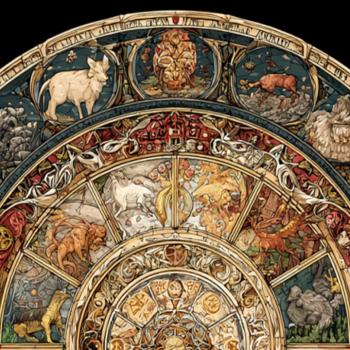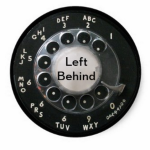
It may come as a shock to some of you, but the Gospel of Judas is a real thing.
It’s an ancient text discovered in the 1970s, hidden away in Egypt for over 1,600 years, and finally brought into the public eye in 2006.
Unlike Matthew, Mark, Luke, and John, this gospel paints Judas Iscariot—the guy we all know as the ultimate betrayer—in a very different light. Instead of the villain who sold Jesus out for thirty pieces of silver, the Gospel of Judas says Judas was actually in on the plan. In fact, according to this text, Jesus asked Judas to turn Him in.
But that’s just the beginning.
A Different Jesus
The Jesus we meet in this text is nothing like the Jesus of the four canonical Gospels.
For starters, he laughs—a lot. Not the warm, loving Jesus-loves-you kind of laugh, but more of a cryptic, I-know-something-you-don’t kind of laugh.
Jesus also spends a lot of time telling His disciples they don’t really get it. He hints at deeper, hidden truths—stuff about the material world being a mistake, the human body being a prison, and the true God being beyond what anyone can possibly imagine.
In this gospel, Jesus tells Judas that by “betraying” Him, he will actually free Jesus from His physical body, allowing Him to return to the divine realm.
So, Judas isn’t the bad guy here—he’s the hero.
Comparisons To Other Gospels
Let’s be real—this version of Jesus doesn’t exactly line up with the one we know from Matthew, Mark, Luke, and John, or even the Gospels of Thomas, Mary or Philip.
Here’s how he’s different:
-
Jesus and the Cross – In the canonical Gospels, Jesus willingly goes to the cross, understanding it as part of God’s plan for redemption. He prays in the Garden of Gethsemane, surrenders to God’s will, and dies for the sins of humanity. But in Judas, Jesus sees the crucifixion as an escape from the flawed physical world. It’s not about atonement—it’s about liberation. In the Gospels of Mary, Thomas and Philip, the crucifixion isn’t really mentioned or discussed at all.
-
Judas: Traitor or Trusted Friend? – In Matthew, Mark, and Luke, Judas is the betrayer who sells Jesus out for money. In John’s Gospel, he’s straight-up called a devil. But in Judas, he’s the only disciple who actually understands what Jesus is really about. Instead of betraying Jesus, he’s obeying Him. Judas makes no appearance in the Nag Hammadi Gospels, or the Gospel of Mary.
-
Who’s Really in Charge? – The four Gospels portray Jesus as bringing the Kingdom of God to earth—healing the sick, forgiving sins, and teaching radical love. In Judas, Jesus seems less concerned with this world and more focused on escaping it. This lines up with a Gnostic worldview, which sees the physical world as a mistake and the true God as totally separate from it. Again, in Mary, Thomas and Philip, death isn’t seen as an escape or a spiritual promotion. These texts speak about awakening to the spiritual reality of Divine Oneness and Connection in this life, rather than in the next.
Is It Legit?
Well, that depends on what you mean by “legit.” Historically speaking, the Gospel of Judas was written at least a hundred years – or more – after Jesus walked the earth.
That means it almost certainly was NOT written by Judas himself—more likely, it was written by a group of Gnostic Christians who had a very different take on Jesus than the early church.
Here’s the biggest thing: Judas isn’t just a different perspective on the same Jesus. It’s a whole different worldview.
The Gospel of Judas is less about a God who loves and redeems his creation and more about a hidden knowledge (or gnosis) that helps a few enlightened people escape it. That’s a pretty big shift from the Canonical and Valentinian texts.
What Do We Do with This?
The Gospel of Judas is fascinating, no doubt about it. It challenges us to think about the different ways early Christians understood Jesus. But does it replace the Jesus of the four Gospels? Not really.
If anything, it reminds us that from the very beginning, people have wrestled with who Jesus really is. And maybe that’s not a bad thing.
Maybe, instead of running from these kinds of discoveries, we lean in—asking better questions, searching for deeper truth, and remembering that Jesus is always bigger than we think He is.
Where I see value in studying the Gospel of Judas is not about whether or not it was written by Judas. [It wasn’t]. Or in whether or not it provides an accurate record of what Jesus said or did. [It probably doesn’t].
But what does seem interesting about the Gospel of Judas is what it tells us about what some early Christians thought about the Jesus story and how they interpreted his teachings, his life, and the religion that came after him.
In fact, I think the most important thing about the Gospel of Judas is the fact that it’s a strong rebuke of the Christianity that people [mostly men] created around Jesus and how that faith mostly subverted his actual message.
So, don’t read the Gospel of Judas as an historical document about the life of Jesus. Don’t study it to learn some secret teachings of Jesus that may have been suppressed by the early Church. But, if you read this text, read it because you’re curious about how some dissenting voices in the Third Century started to challenge the popular narratives about Jesus, and his crucifixion, and about how religious movements in general quite often miss the point.
It’s why other revolutionary figures like Martin Luther King, Jr. and Ghandi, and even C.S. Lewis and George MacDonald have societies and narratives created about them that bear little-to-no resemblance to who they actually were or what they actually said.
Religious movements look for ways to weaponize and exploit certain statements and events in the live of their heroes, and by doing so they quite often obscure the true, raw and messy aspects of that person.
What we end up with is an homogenized version of the person and not the radical, difficult and sometimes offensive human being whose voice challenged the status quo in ways that most of us would rather not admit.
In other words, when the revolutionary radical becomes the mascot for the Empire, you know you’ve missed the entire point.
So, the Gospel of Judas can be a wake up call for the Orthodox Christians who prefer a Jesus who is pious, and holy, and super-human. It presents a more nuanced view of Jesus as someone who was snarky, sarcastic, and mysterious in ways that many Christians today cannot even begin to imagine.
The Gospel of Judas gives us a more human Jesus who burped, farted, sweated and had bad breath. It’s a Jesus we can relate to. It’s a Jesus who mocks the religious zealots and inspires radicals to challenge the system, betray the norms, and kill their gurus and Messiahs.
Is it true? Yes, it speaks truth that may take us time to unravel. But, no, it’s not true in any historical sense. But, then again, how true are the Gospels we find in the Canon? How true is the version of Jesus we prefer as compared to the real human being who walked the sands of Palestine almost 2,000 years ago?
The truth is…we may never know. And maybe that’s okay.

The newest book from Keith Giles, “The Quantum Sayings of Jesus: Decoding the Lost Gospel of Thomas” is available now on Amazon. Order HERE>
Keith Giles is the best-selling author of the Jesus Un series. He has appeared on CNN, USA Today, BuzzFeed, and John Fugelsang’s “Tell Me Everything.”
He co-hosts The Heretic Happy Hour Podcast and his solo podcast, Second Cup With Keith which are both available on Spotify, Amazon, Apple, Podbean or wherever you find great podcasts.













